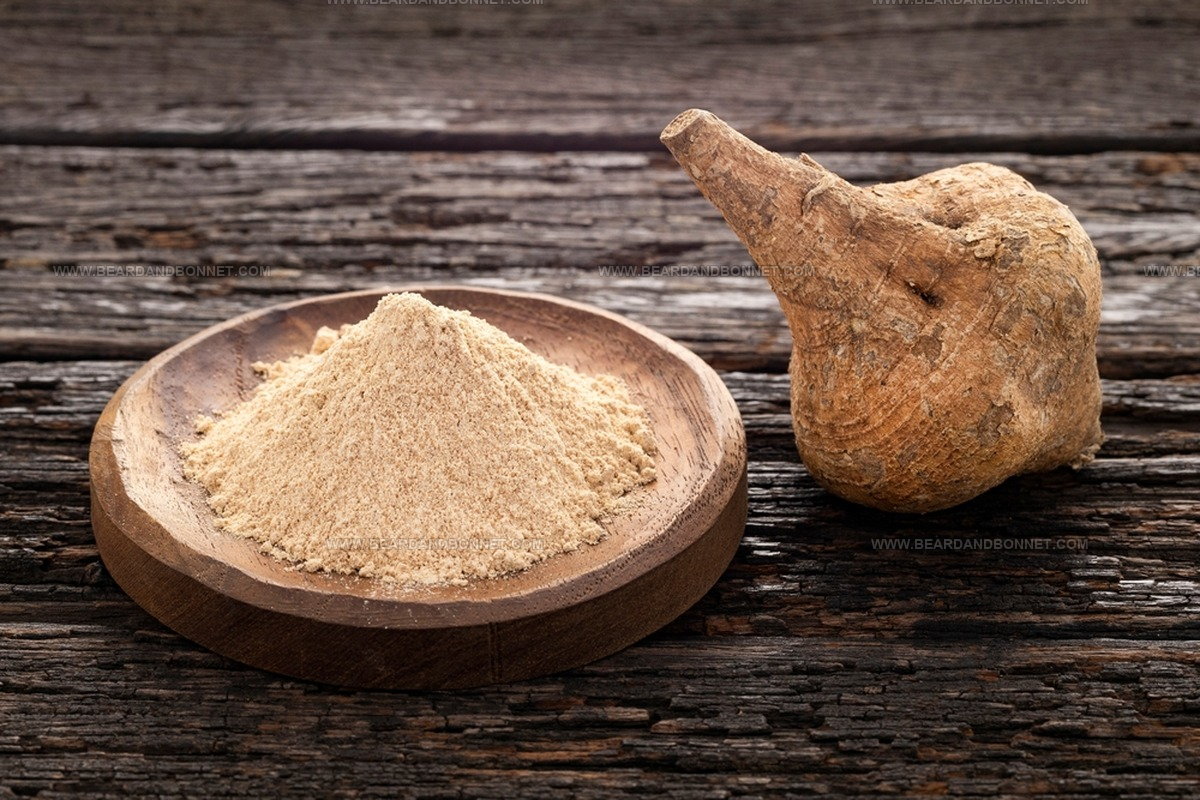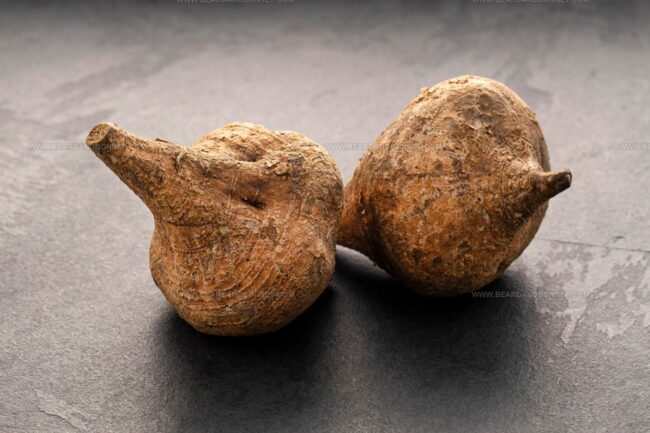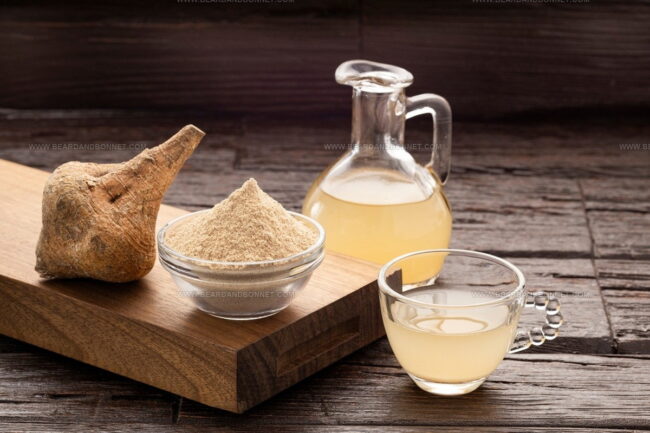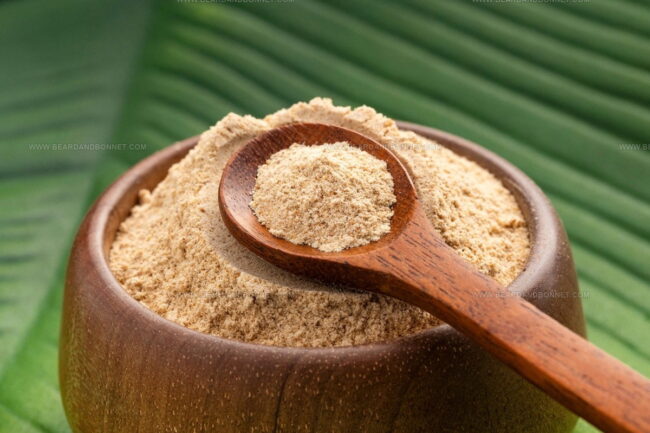What Does Maca Taste Like? Nutty Earth Notes Hit Your Tastebuds
Maca, a nutrient-packed root vegetable from the Peruvian Andes, intrigues health enthusiasts worldwide with its unique culinary potential.
This powerful superfood carries a fascinating profile that goes beyond typical nutrition expectations.
Andean farmers have cultivated maca for centuries, valuing its remarkable properties and cultural significance.
Curious individuals often wonder about its sensory experience and how it might integrate into daily diets.
Nutritionists and food lovers alike find themselves drawn to understanding this extraordinary ingredient's sensory characteristics.
The complexity of maca extends far beyond simple flavor descriptions, promising an adventure for adventurous palates.
Your culinary journey into this remarkable root begins with unraveling its sensory mysteries.
What Is Maca?
Maca stands as a two-year plant within the Brassicaceae group.
Historical records show this plant comes from Peru and remained limited until the 1980s.
Local communities know maca by several names such as Peruvian ginseng, yak willku, ayak chichira, maino, and maca-maca.
Similar to fenugreek, maca serves as a popular supplement connected to potential fertility support.
Kitchens worldwide incorporate maca into milk, porridge, soups, and baked goods.
Its physical structure closely resembles root vegetables like turnips and radish.
Maca produces delicate leaves measuring around 20 cm tall, mostly colored green with white flower clusters.
Root colors range widely, including cream, green, purple, blue, and black variations.
How Maca Tastes
Maca offers a unique taste blending nutty and butterscotch notes.
Flavor changes dramatically between raw and dried versions.
Raw Maca shows a stronger nutty profile, while dried Maca carries a more earthy essence.
Root color significantly impacts overall taste characteristics.
Cream or yellow Maca leans towards sweetness compared to other color variations.
Black Maca presents a complex flavor combining sweet and bitter elements.
Different Maca colors also bring distinct nutritional qualities.
Some mistakenly believe bitter taste signals poor product quality.
Yet black Maca naturally includes subtle bitter undertones.
Slight bitterness in black Maca shouldn't cause alarm unless the specific batch seems unusual.
What Maca Powder Tastes Like
Maca comes in powder form with a unique malt-like or caramel taste. Not all maca colors taste exactly the same, with red and yellow varieties being the sweetest among three color options.
High-quality maca costs more but doesn't guarantee the best flavor. Different types have distinct tastes, and red or pink versions might offer slightly sweeter notes.
Doctors warn against giving maca to children because of its high caffeine content.
Root grinding creates this fine powder by freeze-drying the ancient plant's roots, offering quick health benefits.
Maca's strong scent before grinding resembles a mix of beets and cinnamon.
Maca powder's flavor differs from its raw root version.
Tasters describe the powder as sweet and earthy, with nutty undertones and hints of toasted grains and cocoa. Some find its smell potent and challenging - certain people compare it to musty odors or frying potato scents.
Most individuals enjoy mixing maca into morning smoothies or protein shakes, though personal taste preferences play a significant role in how well someone receives its flavor.
Why You Shouldn’t Eat Raw Maca
Raw maca can grow mold that creates toxic aflatoxins.
These cancer-causing chemicals damage gut health and exist in uncooked maca powder.
Consuming raw maca threatens wellness and disrupts intestinal balance.
Such consumption might cause more harm than potential benefits.
Unprocessed maca root contains substantial starch levels from amylose and amylopectin.
Consuming raw starch challenges digestion, which leads to uncomfortable symptoms like bloating, gas, stomach distention, and pain for some individuals.
Maca powder traditionally undergoes cooking or heating processes.
Scientific research indicates these methods do not reduce but actually boost maca's health advantages.
Heat activates key medical components like FAAH inhibitors, free fatty acids, and other metabolites.
Eating raw maca might prevent you from receiving desired health benefits.
Laboratory testing showed one commercial raw maca sample from New Zealand contained twice higher bacterial counts and eight times more mold concentrations compared to pre-cooked maca samples.
Raw maca presents significant health risks and should not be consumed.
Pre-cooked maca powder offers a sweeter, caramel-like flavor profile.
Raw maca tastes sour and often produces grainy starch residues that create unpleasant textures.
Smoothie enthusiasts will appreciate activated maca's superior taste and smoother consistency.
Does Maca Affect Body Smell?
After a recent yoga session, classmates chatted about smoothie ingredients. Surprise struck when few recognized Maca after someone mentioned it.
Here are seven key details about this special superfood to help conversation flow:
Types of Maca Differences
Maca root comes in a range of varieties, each with its own traits.
Find out how different types of maca compare.
Maca Red
Maca colors showcase unique characteristics that set various types apart.
Red maca might not look truly red, but it stands out as a premium option with higher nutrition and a steeper price tag.
Consumers frequently praise its superior taste and reduced bitter notes.
Red maca displays a golden shade with smooth caramel-butterscotch undertones that delight taste buds.
Maca Cream
Cream maca stands out as a standard variety with its golden, smooth color that appears just a shade lighter than red maca.
Its taste resembles a gentle caramel malt profile and offers a well-rounded flavor experience.
Shoppers will typically encounter this specific maca type in standard product lines unless brands specify otherwise.
Maca Black
Black maca might sound intimidating, but it's actually quite friendly.
Sourced from a grayish maca root, this variety offers a taste reminiscent of cream and red maca.
Considered the most prized and scarce maca type, it also comes with a higher price tag.
Packed with more nutrients, black maca allows you to use smaller amounts while achieving similar benefits.
Research from two Chinese studies in 2006 and 2011 highlighted its potential to boost memory and concentration skills.
Maca Premium
Shoppers need caution when searching for top-quality maca since few businesses create premium versions.
Carefully researched selections lead to better health outcomes.
High-end maca contains more powerful nutrients called glucosinates compared to standard versions, making it superior for wellness goals.
Specific details about glucosinates reveal why this plant stands out among health supplements.
Medical researchers recognize these special compounds as key reasons maca works so effectively.
Maca Team produces an excellent example of premium maca that meets high standards.
Their product delivers exceptional quality through careful manufacturing practices.
Characteristics like organic certification, non-GMO status, vegan production methods, and raw processing make their maca stand out.
Consumers can expect a creamy supplement that remains affordable while delivering significant health benefits.
Smart buyers understand checking product details matters more than quick purchases when selecting nutritional supplements.
Maca Gelatinized
Maca exists in raw and gelatinized versions.
Red, cream, black, and premium types share similar taste, but nutrition varies significantly.
Gelatinized maca undergoes heating, removing its raw state.
Heating helps break down starch, making digestion simpler for some individuals.
Chemical processing reduces maca's nutrient content by more than 50%.
Consumers must weigh digestibility against potential nutritional loss when selecting their preferred maca form.
Maca Raw
Nutrients packed inside raw maca include multiple types of compounds like glucosinates, amino acids, carbohydrates, and key minerals. Raw maca stays unheated during processing, which helps keep all its important health benefits safe.
Careful growing methods at very low temperatures protect the vital elements such as:
Each part of raw maca works to support overall wellness by maintaining nutrients through careful handling and minimal processing.
Maca Capsules
Maca is also available in capsule form if you prefer not to use powders.
Options include raw and gelatinized capsules so you can select what suits your needs.
Maca Powder for Menopause
Researchers continue to debate the effects of maca.
Study results from 2008 showed that consuming 3.5 grams of maca daily for six weeks helped reduce mental health challenges like anxiety and depression.
Recent research indicated positive outcomes for postmenopausal women, with improvements in depression and blood pressure after taking a comparable dose.
Scientists still need more evidence to draw definitive conclusions.
Medical professionals recommend consulting a doctor when experiencing persistent symptoms.
Healthcare providers can offer specific treatment plans tailored to individual health needs.
Possible Side Effects of Maca
Maca has been around for thousands of years, but scientific studies are still catching up.
Researchers find it challenging to determine how maca might impact specific long-term health conditions or interact with prescription medications.
Experts suggest maca could influence blood hormone levels, though the full extent remains unclear.
Medical professionals at Memorial Sloan Kettering Cancer Center recommend caution for individuals with hormone-sensitive cancers, such as estrogen-receptor-positive breast cancer.
Healthcare providers advise speaking with a doctor before adding maca to your diet.
Medical experts generally consider maca safe for most individuals, with minimal side effects.
Some people might experience mild digestive issues or headaches when consuming maca.
Specialists believe these reactions could stem from the powder's fiber content.
Nutritionists recommend starting with a small serving of one teaspoon.
Persistent discomfort should prompt a conversation with a healthcare professional to rule out other potential concerns.
Ways to Eat Maca
Maca root comes in powder form, which works well mixed into smoothies and other dishes.
Websites offer multiple recipes for creating delicious maca drinks.
Shoppers uncertain about preparation can buy maca powder from online retailers or specialty stores.
Simple recipes allow home cooks to experiment easily.
Making a maca smoothie helps users test whether this supplement matches their health goals.
Powdered maca offers simple consumption with a sweet butterscotch taste that blends nicely into drinks.
Recipe collections showcase numerous ways to incorporate this ingredient into daily meals.
Shoppers who feel uncertain about maca can visit local health stores to learn more details.
Store experts can recommend best purchasing options and provide helpful guidance about using maca powder effectively.





Jessica Martin
Recipe Developer & Food Writer
Expertise
Recipe Development, Food Styling and Photography, Seasonal and Local Ingredients, Vegetarian and Vegan Cuisine, Culinary Education
Education
Portland Community College
Oregon Culinary Institute
Jessica Martin is a talented food writer and recipe creator who specializes in seasonal cooking and approachable home baking.
Educated at Portland Community College with additional pastry training from Oregon Culinary Institute, Jessica’s culinary journey spans nearly a decade of creating and sharing flavorful recipes.
Her deep appreciation for local ingredients shapes each of her recipes, making them both accessible and inspiring. At Beard and Bonnet, Jessica uses her cheerful, down-to-earth writing to help readers effortlessly bring new tastes and creative dishes into their daily routines.